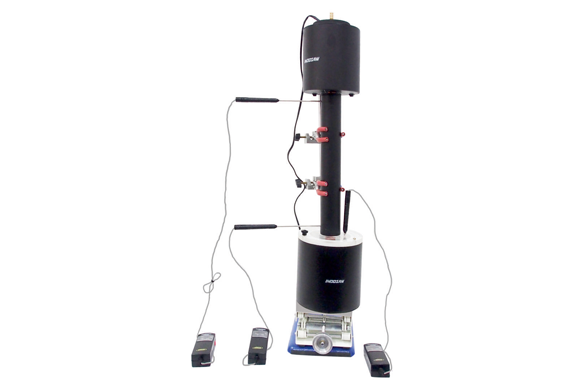
Principle and Working:
The heat conduction occurs due to the temperature difference between different locations of a body. In this setup a one-dimensional temperature gradient along a copper and aluminum rod is investigated. The quantity of heat dQ transported with time dt is a function of the cross-sectional area A and the temperature gradient dT/dx perpendicular to the surface.
...
So dQ/dt = -λ A (dT/dx)
λ is the thermal conductivity of the substance.
The electrical conductivity of a metal (Copper & Aluminum) is determined by the resistance R of the
rod and its geometric dimensions (l=0.315 m, A = 4.91 x10 -4 m 2 )
σ = R.A/l
At room temperature T the conduction electrons in metal have a much greater mean free path than
the phonons. For this reason heat conduction in metal is primarily due to the electrons. The
relationship between the thermal conductivity λ and the electrical conductivity σ is established by
the Wiedmann-Franz law:
λ/σ = L T
Where L is Lorenz number.
Features
Digital timer & photogate: